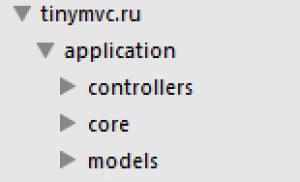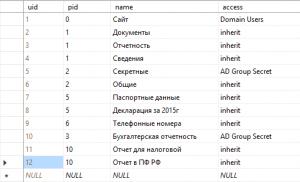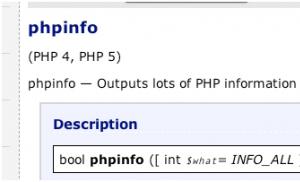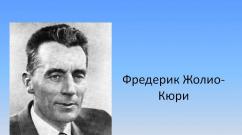World economic unions. Economic blocs and commonwealths of states
Currently, there are approximately 300 international trade and economic organizations in the world with a wide, medium and narrow composition of participants. The main role in the formation of world trade flows is played by a relatively small circle of trade and economic organizations.
WTO/GATT
The General Agreement on Tariffs and Trade (GATT), the predecessor of the WTO, is a multilateral agreement that contains the principles, legal norms and rules that govern the mutual trade relations of the countries participating in it. It was signed in Geneva on October 30, 1947 and entered into force on January 1, 1948 for 23 signatories. The international institution formed on the basis of this Agreement (also called the GATT) for more than 40 years performed the functions of an international trade organization and was the central international body within which the member countries monitored the implementation of the said Agreement, conducted multilateral trade negotiations, and considered controversial issues. discussed critical issues world trade and made decisions concerning the legal foundations of international trade relations.
An important feature inherent in the "design" of the GATT is the possibility of its improvement, development legal regulations Agreement and its organizational forms in accordance with the changing conditions of foreign economic relations. This is one of the reasons for the viability of this Agreement, which explains why the GATT is fully (but in a revised form) incorporated into the mechanism of the World Trade Organization (WTO) created (several years ago) on its basis. The main goal is to promote the development and liberalization of international trade relations by: eliminating customs restrictions; elimination of all forms of discrimination in international trade in order to improve living standards and ensure full employment; increase in real incomes and demand, more efficient use of raw materials, growth in production and trade exchange.
UNCTAD
The United Nations Conference on Trade and Development (UNCTAD) was established in 1964 as a body General Assembly. It is a representative multilateral trade and economic organization. Its members are 186 states, including Russia. The seat of UNCTAD is Geneva (Switzerland).
Membership in UNCTAD is open to any member state of the UN, UN specialized agencies and the International Atomic Energy Agency. Its main tasks are: to encourage international trade, primarily between developed and developing countries; develop recommendations on the development of international economic relations; serve as a center for coordinating the policies of governments and regional economic groupings in trade and related aspects of economic development; contribute to the coordination of the activities of other UN agencies on international trade.
With the creation of the WTO, opinions began to be expressed almost openly about whether this organization is needed at all. However, an understanding has now been reached that the world community needs UNCTAD, since this organization develops general trade and political principles in the context of the development of the world economy, while the WTO is left mainly with purely trade issues.
MTO
The International Customs Organization (ITO) was established in 1952 as the Customs Cooperation Council (CCC). At present, it unites 139 states, including almost all former republics of the USSR.
The main task of the organization is the development and dissemination of common customs "rules of the game" in order to accelerate world trade, unify and facilitate the movement of goods and individuals through customs borders while ensuring the control and fiscal functions of customs. For dashing purposes, great importance is attached to assistance in the harmonization of customs systems and customs legislation, the modernization of the customs service.
ICC
International Chamber of Commerce(ITP) was founded as a non-governmental organization in 1919. It is the world's most authoritative private enterprise organization, uniting over 6 thousand companies, 1.5 thousand national business unions, 110 developing and developed countries, which has overseas offices in more than 50 countries. Location - Paris (France).
In its activities, the MPT pursues the following main goals:
promoting the development of entrepreneurship in the world by encouraging trade, investment and open markets, the free movement of capital;
the adoption of effective and consistent measures in the economic and legal spheres in order to promote the harmonious development and freedom of international trade;
protection of the private enterprise system.
-
International trade-economic unions. There are currently approximately 300 international trade-economic organizations with broad, medium and narrow membership. -
International trade-economic unions trade-economic organizations. -
International trade-economic unions. Currently, there are approximately 300 international trade-economic organizations. Global problems world economy. -
International trade-economic unions. Currently, there are approximately 300 international trade-economic organizations... more ». -
International trade-economic unions. Currently, there are approximately 300 international trade-economic organizations... more ». -
International trade-economic unions. Currently, there are approximately 300 international trade-economic organizations... more ». -
In its development international economic integration goes through several stages. Currently, there are five such successive stages: the free zone trade; customs union; single market; economic union; economic and currency union. -
International trade-economic unions. Currently, there are approximately 300 international trade-economic organizations... more ». -
International trade-economic unions. Currently, there are approximately 300 international trade-economic organizations... more ». -
International trade-economic unions. Currently, there are approximately 300 international trade-economic organizations... more ».
Found similar pages:10
Economic Union ( economicunion) – type of international integration,providing, along with the common customs tariff and freedom of movement of goods and factors of production, the coordination of macroeconomic policy and the unification of legislation in key areas - foreign exchange, budgetary, monetary.This is the highest level of economic integration . At this stage in the development of integration, there is a need for bodies endowed not only with the ability to coordinate actions and monitor the economic development of the participating countries, but also to make operational decisions on behalf of the group as a whole. Governments consensually concede a part of the state sovereignty in favor of interstate bodies with the function of supranational regulation. Such interstate bodies are empowered to make decisions on matters relating to the organization without the consent of the governments of the member countries.
Examples of economic unions:
Economic Union - Benelux – exists since 1948, unites Belgium, the Netherlands and Luxembourg;
Arab Maghreb Union – formed in 1989. Participating countries: Algeria, Libya, Mauritania, Morocco, Tunisia;
Lagos Action Plan -established in 1973, unites all countries of Africa south of the Sahara;
Manu River Union– an agreement on the creation of the union was signed in 1973 by Guinea, Liberia, Sierra Leone
European Union, EU (since 1957, the European Economic Community, EEC) is the most developed economic bloc in the world. The founding countries of the system of European economic communities are France, Germany, Italy, Belgium, the Netherlands, Luxembourg. Since 1973 Great Britain, Denmark and Ireland have joined them. In the late 70s and in the 80s, Greece, Spain and Portugal also became members of the European Community, as the whole association as a whole then began to be called, and in the 90s, Austria, Finland and Sweden. Thus, at the moment, the European Union, transformed from the European Community on the basis of the Maastricht Treaty of 1992, consists of 15 states. The next stage of EU enlargement is expected in May 2004. Cyprus, the Czech Republic, Estonia, Hungary, Latvia, Lithuania, Malta, Poland, Slovakia and Slovenia are invited to join the EU. Thus, the European Union will unite 25 countries.
The EU governance system includes a number of institutional bodies. The European Parliament is the common legislative and representative body of the EU. Together with the European Council (the highest executive body of the EU), the European Parliament decides on the internal market, the EU budget, the admission of new members, etc. The European Council meets as part of the heads of state and government of the participating countries at least twice a year. Here, fundamental decisions are made regarding the main directions of the economic policy of the member states. The Council of the EU (Council of Ministers) is the body that makes the main decisions on current policy issues. The Commission of the European Community is the central institutional structure, which in the system of EU bodies has both the exclusive right of legislative initiative, and certain executive powers, and the function of political control over the observance of fundamental treaties by other participants in the decision-making process in the European Union. The Court of Justice monitors compliance with EU law on the territory of the Member States, monitors the uniformity of application of legal instruments, determines the conformity with the law of Commission and Council legal acts and decides on questions of the application of EU law, if such questions are referred to it for consideration by national courts. Its decisions are final and binding. national authorities authorities.
Modern world economy in the form of unions and groups.
Their collision.
European Economic Area(EEA, eng. European Economic Area, EEA) - established on January 1, 1994 to enable non-member countriesEuropean Union, join the European Common Market.
Between the countries of the European Economic Area, requirements are established to ensure the following "freedoms":
- free trade in goods
- free trade in services
- free movement of labor resources,
- free movement of capital.
The countries where the euro is used as a currency are more integrated. There is no point in going into details, since there are no clear boundaries between the economic union - in addition to the participating countries, there are also candidate countries, "partially" accepted, observers. In particular, practically inside the EEA there are still remnants of the predecessor union -European Association free trade(EFTA), now consisting only of Iceland, Norway, Switzerland and Liechtenstein.
The North American Free Trade Area (NAFTA) is a free trade agreement between Canada, the United States and Mexico based on the model of the European Community (European Union).

The main goal of NAFTA is to remove barriers to trade and investment between the US, Canada and Mexico. While the European Union is based on the concept of federal politics with the distribution of power between its bodies - the Council, Commission, Parliament and Court of Justice, on the one hand, and member states on the other, NAFTA builds integration on the basis of confederal ties between independent sovereign states. Trade interaction in each of these states is supported by autonomous decision-making bodies within the framework established by NAFTA. NAFTA Goals:
- elimination of customs and passport barriers and stimulation of the movement of goods and services between the countries participating in the agreement;
– creation and maintenance of conditions for fair competition in the free trade zone;
— attraction of investments to the countries-members of the agreement;
— ensuring proper and effective protection and protection of intellectual property rights;
– creation of effective mechanisms for the implementation and use of the Agreement, joint resolution of disputes and management;
— creation of a base for future trilateral, regional and international cooperation in order to expand and improve the Agreement;
— Creation of a single continental market.
Customs Union of the EAEU - form of trade economic integration Belarus, Kazakhstan, Russia, Armenia, Kyrgyzstan and Tajikistan (the last three countries joined since 2015) providingi single customs territory,within which customs duties and restrictions of an economic nature are not applied in mutual trade in goods, with the exception of special protective, anti-dumping and countervailing measures. At the same time, the member countries of the Customs Union apply uniform customs tariffs and other regulatory measures when trading with third countries.
The forerunner of the Customs Union of the EAEU there was and still is a larger union:CIS Free Trade Zone (FTA) , which in turn is rooted in former USSR(excluding Latvia, Lithuania and Estonia).

Free trade Area. Dark blue indicates the countries of the Customs Union of the EAEU.
And even earlier there were such phenomena as the socialist camp and the Warsaw Pact Organization.

It included, in addition to the 15 republics of the former USSR, Romania, Bulgaria, Poland, Hungary, the GDR (East Germany), Czechoslovakia (now the Czech Republic and Slovakia) and for some time Albania. At the same time there was a larger association: Council for Mutual Economic Assistance. Almost all countries participating in the Warsaw Pact, after the defeat of "Moscow" in the Cold War, joined the EU (EEA) and NATO, and the Baltic countries (Estonia, Latvia and Lithuania) also went there.
And here it would be very appropriate to give a description of the historical collisiontwo major economies.The European Economic Union, like the capitalist camp as a whole, grew at the end of the last and the beginning of the current century, advancing on the socialist camp of the countries of Europe!First on the Warsaw Treaty Organization, and then on the economic space of the former USSR.And it was simply necessary for the Capitalist Camp and the European Union! The theoretical reasons for this need were quite specific and they are described in the articles: "the basic scheme of the economic crisis" and schemes for building economic unions. Let me remind you that the capitalist system of the economy based on loan interest, in order to preserve its own well-being (in addition to regular With lower interest rates on loans) necessary: expand markets and reduce production costs. The latter means that morelearn new resources and deepen the division of labor. In other words: "capitalist"economic unionsit was necessary to expand at the expense of the socialist camp, because their borders touched.
Eastward expansion of the European Union.

The result is the following: In the USSR, after the collapse, production ties were disrupted, and both inside the former Soviet Union, and partly throughout the socialist camp. After the opening of the borders and the "raising iron curtain"Soviet goods (and, to some extent, products produced by the socialist camp) were forced out by imports from countries of other economic systems: North American, European, and also from Asian countries. That is, countries of the former USSR served market expansion for the rest of the world!The GDR actually became part of the Federal Republic of Germany (Germany), Poland, the Czech Republic, Slovakia, Hungary, Bulgaria, Romania and others moved to the economic system of the EEA (EU) (i.e. there was deepening division of labor and expansion of sales markets for the "capitalist world", especially for the European Union).
An approximate map of the confrontation between the two united economic systems:
capitalist (blue) and socialist (red).

Russia, as a loser in the Cold War, was included in the European Economic Area as a supplier of oil and gas, i.e.became a supplier of resources to support production in Europe. Oil and gas in Western Europe The USSR began to supply even under Brezhnev, but under Gorbachev and beyond, these deliveries became even larger ( development of new resources for the EU).The teams of Gorbachev and Yeltsin, meanwhile, scored a large number of loans for "its development" on the advice of Western experts, i.e. Russia thus helped Western bankers earn money. For such, purely economic reasons, the fall of the USSR became for the "West" a reason for economic recovery and a significant postponement of the coming economic crisis (). The words below Zbivniew Brzezinski(American ideologue of US foreign policy) have not only a military-hostile meaning, but also quite practical economic application:

The reasons for the collapse of the USSR and the collapse of socialism in Europe are worthy of separate consideration. And we will return to the present ... Let me remind you that an economic union with a center in Moscow (Customs Union) is being created again, but more like an economic one, and not a military-political one either.
BRICS(English) BRICS- short forB razil, R ussia, I ndia, C hina, South Africa) - a group of five countries : Brazil , Russia , India , China , Republic of South Africa.

Initially, the union was planned more as a geopolitical, new "center of power" to oppose the IMF, the US, the EU and NATO, but what is geopolitics without economics? However, so far the economic integration of countries within the union is low,in 2012, the volume of trade between the BRICS countries was just over 10% of the total trade volume of the union members.
Shanghai Organization cooperation- an international organization founded in 2001 by the leaders of China, Russia, Kazakhstan, Tajikistan, Kyrgyzstan and Uzbekistan, and on July 10, 2015, India and Pakistan joined the SCO (these are indicated dark green, other observers and partners).

os The new goals and objectives of the SCO are:
- development of multidisciplinary cooperation in order to maintain and strengthen peace, security and stability in the region, to promote the construction of a new democratic, fair and rational political and economic international order;
- joint counteraction to terrorism, separatism and extremism in all their manifestations, combating drug and arms trafficking, other types of transnational criminal activity, as well as illegal migration;
- encouragement of effective regional cooperation in political, trade and economic, defense, law enforcement, environmental protection, cultural, scientific and technical, educational, energy, transport, credit and financial and other areas of common interest;
- promotion of comprehensive and balanced economic growth, social and cultural development in the region through joint actions based on equal partnership in order to steadily raise the level and improve the living conditions of the peoples of the Member States;
- coordination of approaches to integration into the world economy;
- promotion of human rights and fundamental freedoms in accordance with the international obligations of the Member States and their national legislation;
- maintenance and development of relations with other states and international organizations;
Asia-Pacific Economic Cooperation (APEC)
Asia-Pacific economic cooperation (APEC) (English) Asia-Pacific Economic Cooperation, APEC ) is a forum of 21 economies of the Asia-Pacific region for cooperation in the field of regional trade and the facilitation and liberalization of capital investment. The goal of APEC is to increase economic growth and prosperity in the region and to strengthen the Asia-Pacific community.
As a strategic goal, the creation of 2020 in the Asia-Pacific Region (Asia-Pacific Region) systems of free and open trade and a liberal investment regime. The most developed economies must implement liberalization by 2010. However, customs barriers remain significant and negotiations continue.
There are also such economic unions as the Latin American Integration Association (LAI), which includes 12 states: Argentina, Bolivia, Brazil, Venezuela, Colombia, Cuba, Mexico, Paraguay, Peru, Uruguay, Chile, Ecuador. Headquarters Montevideo (Uruguay). And closer (with uniform customs tariffs) Mercosur (Mercosur):
And there are also various African unions, such as the Economic Community of Central African Countries (ECOCAS). In general, in addition to interaction within the union, countries can almost always trade with the rest of the world. Also, the same country can be part of different economic unions. In addition, the degree of integration of each union is different, in some of them there are simply lowered customs barriers, and full and free trade, like the single currency of the union, is only discussed in the distant future. At first glance, due to the abundance and diversity of Economic Unions, it is very difficult to understand modern politics... Like, it is necessary to study the details of agreements, study complex economic statistics, and so on. But it is not so!
Firstly, only really large associations influence the world situation.
Secondly, it is possible to separate really large and highly integrated unions from organizations that have just been born, or do not have clear agreements and prospects. Here are the main criteria for evaluating economic unions, they also show the degree of globalization:
1) The level of customs barriers within the organization.
2) The presence of a common monetary unit or the degree of readiness to create it.
1) Customs barriers are low or non-existent in unions such as NAFTA, EAZ and EAEU (Customs Union).
2) Common currency. At the moment there is only in the EAZ (euro €), but in general, both in the past and in the nearest possible plans, various options were discussed (and are being discussed):
Transferable ruble as a means of payment within the CMEA, 1963-1990.
Amero. The project never sold the currency within the NAFTA union.
The currency of the EAEU (CU) is being discussed, the use of the ruble was previously discussed, but the negotiations reached an impasse.
As new members join, any economic union becomes more self-sufficient, this is in its interests. But complete self-sufficiency in modern economy can only be in "isolated" countries, i.e. such as North Korea or underdeveloped countries in Africa, subsistence living. The NAFTA union is potentially self-sufficient, the Latin American Integration Association (LAI) has a chance, since they have both resource extraction (mainly oil!) and production. The EEZ and the EAEU work in pairs, since there are few raw materials in Europe (the Russian Federation supplies, partly Kazakhstan, Azerbaijan and Turkmenistan), and the EAEU does not have all production, there are technical dependences on the countries of the European Union. China is a relatively independent force as a very large developing economy, but it is a global manufacturer, it needs a large sales market and a supplier of raw materials. To build a scheme of interaction between leading countries and economic unions, data on the total trade turnover are needed. I did not find visual aggregate data of world trade on the Internet, but it is possible to piece together the largest trading partnerships from data for each country / economic union separately. Clicking on the turnover figures will take you to the source of the data. The reasons are described in the economic crisis chart. If everyone has enough opportunities for development, if the reduction in interest on loans has not yet exhausted itself, if all major economic unions have room to expand without affecting each other's interests, then it is easier to overcome conflicts by reaching an agreement and not wasting efforts on an arms race. But what if we expand again (as in the case of the confrontation between the capitalist, western camp and the socialist, eastern) described above? What if the planet ended? The answer is simple - the duel begins for the spheres of political, economic and military influence, the struggle for oil, other raw materials ... And the enticing of countries for cooperation from competing economic unions! This is where the intrigue kicks in.
§ 5. Why do countries enter into economic and trade unions?
International integration- these are associations at the level of countries connected by ties economic cooperation. The result of integration processes is the implementation of a common economic policy towards third countries, the creation of common economic facilities.
Integration is a powerful tool for developing regional economies and increasing their competitiveness in the world market. Currently, regional integration associations are the most common, and on the agenda of the 21st century. is the question of global integration- merger of regional associations.
In order for an integration association to work successfully, a combination of several objective and subjective factors is necessary. First of all, this economic forces A: Member countries must have equally high levels of socio-economic development and high GDP growth rates. Experience shows that integration along the lines of “and two poor people met...” is doomed to failure. Such political factors as the desire and readiness of state leaders to create supranational structures, as well as geographical proximity and cultural and historical community of countries are also of great importance.
Stages of economic integration. Types of interstate associations differ in the degree of integration of national markets, the level of intensity of economic ties, the degree of coherence of economic policy towards third countries. The development of any integration association is started by interstate trade agreements, the number of which has been growing rapidly in recent decades (Fig. 218).
Rice. 218. Growth in the number of trade agreements concluded between the countries of the world, 1958-2004
Preferential agreements are widespread. They are concluded by countries, agreeing on the mutual reduction or cancellation of customs duties on imported goods. At the same time, trade relations and duties in relation to third countries remain the same.
According to the degree of strengthening of interdependence, the following types of integration interstate associations are distinguished.
- Free trade Area involves the elimination of tariff and quantitative restrictions on trade between countries (European Free Trade Association - EFTA, North American Free Trade Area - NAFTA, Latin American Integration, Asia-Pacific Economic Community - ARES).
- Customs Union, except for the measures of the free trade zone (the abolition of duties and quantitative restrictions on mutual trade), provides for the unification of tariffs in trade with third countries. For the functioning of the customs union, an interstate council at the ministerial level and a secretariat are being created.
- Common Market. Its creation assumes all the advantages of a customs union, plus the free movement of capital, work force, goods and services. Meetings of heads of state, heads of ministries are held regularly, and a permanent secretariat operates.
- Economic Union. The countries that have signed the agreement on economic union are subject to agreed social, regional, budgetary policies, common trade policies. There is an interstate body with the function of supranational regulation.
- Full (economic and political) integration becomes possible when political measures are added to economic measures - supranational governing bodies are created, the function of state borders. Supranational governing bodies are working effectively - an elected parliament, economic management bodies, a constitution is being created.
APEC (Asia-Pacific Economic Community - APEC - Asia - Pacific Economic Cooperation)
APEC is the world's largest free trade zone, established in 1989. Now it includes 21 countries: economically developed countries - the USA, Canada, Australia, New Zealand, Japan; fast growing economies of the Southeast and East Asia- China, the island of Taiwan and Hong Kong (included as separate members), the Republic of Korea, Singapore, Brunei, Malaysia, Thailand, the Philippines, Vietnam, Indonesia, Papua New Guinea, Latin American countries - Mexico, Chile, Peru; as well as Russia.
APEC activities are advisory in nature, there are permanent bodies: the Committee on Trade and Investment, the Economic Committee, the Committee on Budget and Management, the Committee on Economic and Technical Cooperation. Member countries produce almost 2/3 of the world GDP, 40% of the world foreign trade turnover, there is a rapid growth in mutual trade and intra-regional ties.
Key issues of interstate cooperation are discussed at the annual meetings of leaders.

Rice. 219. Meeting of APEC leaders in Sydney, Australia, 2007 Traditionally, the heads of APEC member states are photographed in the national dress of the host country
Almost every country in the world takes part in one or another integration economic grouping (Table 22). The names of integration associations, as a rule, do not reflect the real stage of integration of economies, but indicate the goals of integration that were set when they were created. It often happens that a grouping that calls itself an economic union, in practice, is engaged in the elimination of customs tariffs (that is, it is at the first stage of integration) or exists only in signed documents on its organization.
Table 22. Main integration associations, beginning of the 21st century



Among the many international integration associations that exist today to create a real economic and political union only the European Union (EU), which included the developed countries of Western Europe, directly approached.
Economic integration in Europe after the Second World War was caused by the need to develop the European economy, independent of the American market. Without customs protection from goods coming from the United States, the pioneer industries of that time, the automotive and aviation industries, could not successfully develop. European integration began in the 1950s, when an agreement was signed to create the European Coal and Steel Community (ECSC), which controls the coal, iron ore and metallurgical industries of France, Germany, Italy, Belgium, the Netherlands and Luxembourg.

Rice. 220. Treaty of Rome establishing the European Community: a) the room in the Capitoline Museum, where it was signed in 1957; b) the signatures of the leaders of six states on the treaty
In 1957, the ECSC countries signed the Treaty of Rome establishing the European Economic Community (Common Market) and the European Atomic Energy Community (Euroatom). At the end of the 60s. as a result of the merger of three organizations - the ECSC, Euroatom, the EEC - a new integration grouping was created - the European Community (Fig. 220, 221). The agreement provided for the gradual abolition of customs restrictions and the establishment of a common trade policy in relation to third countries, ensuring the free movement of capital, goods and labor, the development and implementation of a common policy in the field of Agriculture, the creation of a monetary and political union.
In 1973 the UK, Denmark and Ireland joined the EU, in 1981 - Greece, in 1986 - Spain and Portugal.

Rice. 221. EU enlargement, 1957-2007
1 Greenland - as a territory within the Kingdom of Denmark, joined the EU in 1973; in 1985 it withdrew from the EU due to disagreement with the established quotas for fishing.
A new stage in the deepening of European economic integration dates back to the early 1990s. In 1991, the EU and EFTA signed an agreement on the creation of a single European economic area. In 1992, the Maastricht Accords were signed (entered into force in 1993), providing for the creation of a genuine European Union - economic, monetary and financial - and the introduction of a single pan-European citizenship.
On November 1, 1993, after the ratification of the agreements by all twelve member countries, the European Economic Union was renamed the European Union.
In 1995, three more countries joined the EU - Austria, Sweden, Finland. The planned accession of Norway was blocked by the results of a referendum in the country: citizens spoke out against the country's accession to the EU (Fig. 221).
The economic result of integration was a reduction in production costs by an average of 7%, in banking, insurance and transport - by 15-20%.
Since January 1, 1999, a single EU currency unit, the euro, has been introduced for non-cash payments. In 2002, the euro was introduced for cash payments. This currency unit is currently used for mutual settlements between 15 EU member countries: Belgium, Germany, Italy, Luxembourg, the Netherlands, France, Ireland, Greece, Spain, Portugal, Austria, Finland. In 2007, Slovenia joined the euro area, in 2008 - Cyprus and Malta, in 2009 - Slovakia.
2004 was marked by the largest expansion of the Union in the history of European integration. The union included Cyprus and Malta, the former socialist countries of Central and of Eastern Europe: Hungary, Poland, Czech Republic, Slovenia, Slovakia, as well as the former republics that were part of the USSR - Estonia, Latvia, Lithuania. In 2007, Bulgaria and Romania became members of the EU.
EU accession countries have been in the pre-accession program for almost 10 years, as they have lagged far behind the EU average per capita GDP.
The combined GDP of the ten countries of Central and Eastern Europe is only 13% of the EU level, the standard of living in them is less than 50% of the EU average, which is lower than in the most backward regions of Spain, Portugal and Greece (Fig. 222).

Rice. 222. Differences in living standards between EU member states
Membership in the EU gives newly joined countries additional opportunities for economic development: financial investments, assistance to backward areas, provides access for national products to the EU markets.
Three countries remain candidates for EU membership - Croatia, Macedonia and Turkey. Today the EU is one of the leading centers of the modern world, the world's largest exporter and importer of capital. TO beginning of XXI v. 490 million people lived in 27 EU member states, the share of the EU in world GDP was 20%, in world exports - more than 40%.
Schengen agreements: Europe without state borders
In 1995 came into force Schengen agreements, along which free movement across national borders of capital, goods and labor was opened. The agreements provided equal rights for study and work to citizens, uniform standards for goods and environmental safety were introduced.
By the beginning of 2007, 15 countries became full members of the Schengen Agreements: 13 EU member countries (Austria, Belgium, Germany, Greece, Denmark, Spain, Italy, Luxembourg, Portugal, the Netherlands, Finland, France, Sweden), as well as Iceland and Norway (non-EU members). Since December 2007, the countries of Central and Eastern Europe (Hungary, Poland, Czech Republic, Slovenia, Slovakia, Estonia, Latvia, Lithuania) and Malta have joined the Schengen zone. Thus, the number of countries participating in the Schengen Agreements has increased to 24.
Great Britain and Ireland participate in the Schengen agreements only in terms of security and crime. At a referendum in 2005 in Switzerland, the issue of joining the Schengen zone was positively resolved; in December 2008, border passport control was abolished.

Rice. 223. Checking passengers when crossing the borders of the Schengen zone at Munich Airport (Germany)

Rice. 224. Border between Austria and Germany
Economic Integration in America. There are several dozen integration associations in North and Latin America. NAFTA is considered the most influential.
North American Free Trade Area(NAFTA - North American Free Trade Area) includes the USA, Canada and Mexico. The agreement on the establishment of the organization entered into force on January 1, 1994. It provided for the phased withdrawal tariff restrictions for trade in goods light industry, machines and spare parts, as well as for the entire range of agricultural products. This contributed to the growth of mutual trade: in 1990-2005. trade turnover between the US and Canada increased 3 times, and between the US and Mexico - 4.5 times (Fig. 226).
Mexico's participation in NAFTA
The US-Mexico border cooperation zone was created to contain illegal labor migrants from Latin America to the United States. Enterprises owned predominantly by American capital and using cheap labor have been set up in the Mexican cities of Tijuana, Mexicali, and Ciudad Juarez, in which labor migrants from the central regions of the country “settle”. At the beginning of the XXI century. in this narrow frontier strip, almost 2/3 of the value of the output of the manufacturing industry of Mexico was produced (Fig. 225).
It is expected that the creation of a free trade area will facilitate the movement of factors of production: capital from the more developed member countries (USA and Canada) will migrate to Mexico, especially in labor-intensive industries (textiles and toys). This should lead to an increase in employment in Mexico and, accordingly, the prevention of illegal migration from Latin American countries through Mexico to the United States. It is believed that the Mexican economy will benefit the most from participation in NAFTA due to increased inflows of foreign capital. Common NAFTA laws on the environment and labor protection have been adopted. However, until now, Mexicans are not allowed to carry cargo through the United States and Canada, and the United States is fighting Mexican immigration.
On the other hand, the growth of US exports to the open markets of Canada and Mexico will require the creation of new jobs in high-tech industries, banking and services.
What benefits did the Mexican economy get from participating in NAFTA?
Free trade zone between Mexico and the EU was established at the end of 1999. Thus, the EU received a new "direct route" to the US market: an 82% reduction in duties on imports of industrial products from Mexico to the EU and 45% - from the EU to Mexico, from 20 to 3% duties on European cars.
Common Market of the Southern Cone (MERCOSUR)- the largest and most dynamically developing union of Latin America. It includes Argentina, Brazil, Paraguay, Uruguay. This is 270 million people, 2/3 of the GDP of Latin America, almost 3/3 of the foreign trade turnover. The agreement (1991) provides for the abolition of trade and other duties and tariff restrictions in mutual trade, a single customs tariff, coordination of industrial, agricultural and financial policy. In 1994, a program was adopted to create a customs union: 85% of the mutual trade turnover would be freed from tariff barriers. Supranational governing bodies have been created.

Rice. 225. Twin cities on the US-Mexico border

Rice. 226. Growth of mutual trade of NAFTA member countries in 1990-2006 Removal of restrictions in mutual trade led to an increase in trade between member countries
NAFTA and MERCOSUR could start an all-American free trade zone from Alaska to Tierra del Fuego.
Integration processes in the post-Soviet space. Commonwealth Decision Independent States(CIS) was adopted in 1991, when it included 12 republics of the former USSR (Fig. 227), with the exception of the Baltic countries. In August 2008, Georgia withdrew from the CIS. Difficulties in integration are associated with a number of factors - unwillingness political leadership countries return to the era of the USSR, their desire for independence, as well as the difficult socio-economic situation of the countries (Fig. 228).
In the 1990s a system of governing bodies of the Commonwealth was created, agreements were concluded between member countries on the development of intraregional cooperation. However, a significant part of the adopted decisions remained unfulfilled.
Task 24. What types of countries in terms of socio-economic development stand out in the CIS?
The failures of the CIS integration forced the states to turn to regional integration. At the end of the XX century. sub-regional integration associations were created in the post-Soviet space.
GUAM was founded in October 1997 by Georgia, Ukraine, Azerbaijan and Moldova (Uzbekistan was a member of the organization in 1999-2005).

Rice. 227. Monument of the USSR in Krasnorechensk (Ukraine)

Rice. 228. Differences in GDP per capita between CIS countries (Georgia withdrew from the CIS in 2008)
The goal is to create a free trade zone and joint use of the transit corridor Turkmenistan - the Caspian Sea - Azerbaijan - Georgia - the Black Sea - Romania - Bulgaria and the construction of the trans-Eurasian oil pipeline Baku - Tbilisi - Ceyhan (Turkey).
EurAsEC(Eurasian Economic Community) as part of Belarus, Kazakhstan, Kyrgyzstan, Russia, Tajikistan, Uzbekistan (since 2006) was formed in 2000 with the aim of creating a customs union in the future by 2011. In 2008, the membership of Uzbekistan was suspended.
Creation Agreement Union State of Belarus and Russia ratified in 2000. Supranational governing bodies were created - the Supreme State Council (the highest body of the Union State), the Parliament (representative and legislative body), the Council of Ministers (executive body), the Standing Committee (coordinating body), the Court, the Accounts Chamber, industry and functional organs. However, real integration has been slow to progress, constrained by disagreements over energy prices and political factors.
Shanghai Cooperation Organization (SCO)- a regional international organization, which includes China, Russia, Kazakhstan, Tajikistan, Kyrgyzstan and Uzbekistan, was founded in 2001.
Initially, the goals of the organization were proclaimed to be the strengthening of stability and security in the region (the fight against terrorism, separatism, drug trafficking in Central Asia, the joint protection of the borders of the participating states). Later, the interests of the organization extended to the development of regional economic cooperation, energy partnership, scientific and cultural interaction. In 2003, the Program of Multilateral Trade and Economic Cooperation was signed, which provides for the creation of a free trade zone. Much attention is paid to joint energy projects of producers, consumers and transit countries of energy resources and joint use of water resources.
China is showing particular interest in the development of economic relations, considering the SCO countries as reliable markets for its goods.
Supranational bodies operate within the framework of the SCO: the Council of Heads of State, the Council of Heads of Government, the Council of Foreign Ministers, the Meetings of Heads of Ministries and Departments, the Council of National Coordinators, the Regional Anti-Terrorist Structure, and the Secretariat.
Integration in developing regions, as a rule, does not go beyond the creation of free trade zones.
Here, trade and commodity organizations (the Asian Coconut Community, the International Coffee Organization, the Asian Rice Trade Fund, OPEC - the Organization of the Petroleum Exporting Countries), which control world prices and production quotas for certain kind products. Organizations have also been established for the joint development or exploitation of mineral deposits or territories (Organization for the Development of the Lower Mekong River, Organization for the Development of the Senegal River, etc.). The functioning of general economic organizations such as the Arab Common Market, ASEAN, ECOWAS (Economic Community of West Africa), in accordance with the tasks set, is often hampered by the uniformity of economic structures, the low overall economic level of development, as well as political instability and military conflicts between the countries - members of the integration.
Main ideas of the theme
- Differences in natural conditions and resources are the main factor in the emergence of the geographical division of labor and the specialization of territories.
- Historically, the first was the inter-district division of labor; the international division of labor arose in the process of specialization of countries in the production of products, the national price of which is lower than the international one.
- The features of a country's participation in the international division of labor are influenced by how natural conditions and resources, as well as the size of the territory and its geographical and geopolitical position. Importance has a level and type of socio-economic development.
- Narrow (mono-commodity) specialization, specialization in the export of manufacturing products makes the country's economy dependent on the situation on the world market.
- Specialization in the export of manufactured products and export of services is the most beneficial for countries.
- The answer to the question: "Why do countries trade with each other?" - the best minds of economists were looking for - mercantilists (only export was considered justified), Adam Smith (the theory of absolute advantages), David Ricardo (the theory of relative advantages), Nobel Prize winners Bertil Ulin (Heckscher-Ulin theorem), Wassily Leontiev (Leontief's paradox).
- The states of the world are trying to regulate the flow of exports and imports by introducing customs duties and non-tariff restrictions(in terms of volume or quality of products).
- The World Trade Organization (WTO) sets for member countries general rules movement of goods and services.
- Before the Great geographical discoveries, world trade consisted in the transportation of expensive and fairly light goods - gold, fabrics, spices.
- From the middle of the XVI century. world trade began to develop rapidly thanks to geographical discoveries and progress in vehicles: the volume and cost of transported goods, their range grew, the share of world regions in world trade changed.
- The main share of world exports of goods and services falls on economically developed countries. In recent decades, the role of China in world trade has been growing at an especially rapid pace.
- Intra-regional trade is especially strongly developed in economically developed regions - Europe and North America. Foreign trade of less developed regions with the same type of economic structure is oriented towards more developed regions and countries.
- The commodity structure of exports of the regions of the world varies significantly: in Europe and America, manufacturing products predominate, in less developed regions - raw materials and fuel.
- Almost all countries of the world are members of integration associations, which are created to facilitate trade conditions and reduce costs.
- Integration associations of the world differ in the degree of intensity of economic ties and coherence of economic policy (free trade zone - customs union - common market - economic union - full integration).
Repetition and generalization of knowledge on the topic
- When and why did the division of labor arise?
- What types of division of labor do you know?
- What are the reasons for the emergence of the territorial division of labor (interregional and international)?
- How do natural conditions and resources (the size of the country's territory, its geographical and geopolitical position) influence the specifics of the country's participation in the international division of labor?
- How does specialization in the export of extractive industry products (manufacturing industry, services) affect the economy of the exporting country?
- What is the contribution to the development of theories of the international division of labor of the mercantilists, A. Smith, D. Ricardo, B. Ulin, M. Porter, V. Leontiev?
- What were the features of the development of international trade before the Great geographical discoveries?
- Tell us about the features of the development of world trade in the XVI-XIX centuries.
- What new features appeared in international trade in the 20th century?
- Which regions and countries were leaders in world exports and imports at the beginning of the 21st century?
- What are the main interregional trade flows formed by the beginning of the 21st century?
- What differences exist in the commodity structure of exports between regions of the world?
- What changes took place in the geography of foreign trade of Eastern European countries in 1980-2006?
- What indicators exist for the analysis of foreign trade? How are they calculated and what processes do they reflect?
- What are the features of the participation of developed countries in world trade?
- What are the characteristics of participation developing countries in world trade?
- What are the features of Russia's participation in world trade?
- How did the commodity structure of exports and imports of our country change in 1960-2005?
- What stages of economic integration do you know?
- What is the difference between a "free trade zone" and a "preferential zone"?
- What are specific traits customs union ( common market, economic union)?
- Name the integration associations you know and the countries that are part of them.
- What are the differences in integration processes in developed and developing regions of the world?
Council of Europe (CE) educated in 1949 d. economically developed countries.
V 2008 The Council included 47 states, including former socialist countries and Russia (adopted in 1996 G.).
The goals of the Council of Europe are the protection of human rights, the expansion of democracy, the rapprochement of positions European countries on issues of environmental protection, education, health care.
Member countries ( 47 ): Austria, Azerbaijan, Albania, Andorra, Armenia, Belgium, Bulgaria, Bosnia and Herzegovina, Hungary, Greece, Georgia, Great Britain, Denmark, Iceland, Ireland, Spain, Italy, Cyprus, Latvia, Lithuania, Liechtenstein, Luxembourg, Macedonia, Malta, Moldova, Monaco, Netherlands, Norway, Poland, Portugal, Russia, Romania, San Marino, Serbia, Slovakia, Slovenia, Turkey, Finland, France, Germany, Montenegro, Czech Republic, Croatia, Switzerland, Sweden, Ukraine, Estonia.
Observer status ( 5 ): Vatican, Canada, Mexico, USA and Japan.
The highest body is the Committee of Ministers, which political aspects cooperation, budget, adopts policy recommendations.
Within the framework of the Council of Europe, the European Youth Center, the European Court and other organizations and funds operate.
The governing bodies are located in Strasbourg (France).
European Union- EU ( European Union-EU)- the most significant political and economic organization of European countries. The forerunners of the EU were the European Coal and Steel Community, formed in 1950 g. to protect these advanced industries from competition with American industry, then the European Economic Community and the European Union.
In 1957, the ECSC countries (France, Germany, Italy, Belgium, the Netherlands and Luxembourg) signed the Treaty of Rome establishing the European Economic Community (Common Market) and the European Atomic Energy Community (Euroatom).
At the end of the 60s. as a result of the merger of three organizations - the ECSC, Euroatom, the EEC - a new integration grouping was created - the European Community. The agreement provided for the gradual abolition of customs restrictions and the establishment of a common trade policy towards third countries, ensuring the free movement of capital, goods and labor, the development and implementation of a common agricultural policy, and the creation of a monetary and political union.
The goals of the EU are to coordinate the actions of member countries in the areas of the economy (Creation of a common market, economic and monetary union, single currency), defense, law, foreign and domestic policy(including coordinating immigration, jointly countering terrorism, improving the living conditions of citizens of member countries), creating a space without internal borders.
In 1973 Great Britain, Denmark and Ireland joined the EEC, in 1981 - Greece, in 1986 - Spain and Portugal.
A new stage in the deepening of European economic integration dates back to the early 1990s. In 1991, the EU and EFTA signed an agreement on the creation of a single European economic area. In 1992 were signed Maastricht Accords(entered into force in 1993), providing for the creation of a genuine European Union - economic, monetary and financial - and the introduction of a single pan-European citizenship.
On November 1, 1993, after the ratification of the agreements by all twelve member countries, the European Economic Union was renamed the European Union.
In 1995, 3 more countries joined the EU - Austria, Sweden, Finland. The planned accession of Norway was blocked by the results of a referendum in the country: citizens spoke out against the country's accession to the EU.
Since January 1, 1999, a single EU currency unit, the euro, has been introduced for non-cash payments. In 2002, the euro was introduced for cash payments. This currency is now used for mutual settlements between 13 EU member countries: Belgium, Germany, Italy, Luxembourg, the Netherlands, France, Ireland, Greece, Spain, Portugal, Austria, Finland. In 2007, Slovenia entered the euro area.
2004 was marked by the largest expansion of the Union in the history of European integration. The union included Cyprus and Malta; former socialist countries of Central and Eastern Europe: Hungary, Poland, Czech Republic, Slovenia, Slovakia, as well as former republics that were part of the USSR - Estonia, Latvia, Lithuania.
In 2007, Bulgaria and Romania became members of the EU.
European Monetary Union operates within the EU 2008 included 13 countries: Austria, Belgium, Greece (joined in 2001 g.), Italy, Ireland, Spain, Luxembourg, the Netherlands, France, Portugal, Finland, Germany. At the end of 2007, Slovenia entered the euro area.
The single currency - the euro - began to be used for non-cash payments, and from January 1, 2002 - in cash.
European Free Trade Association - EFTA (European Free Trade Association - EFTA) established in 1960 g. as a counterbalance to the European Economic Community. Consistently, the EFTA member countries joined the EU; by 2008, 4 members remained in the EFTA - Iceland, Liechtenstein, Norway, Switzerland.
The headquarters is in Geneva (Switzerland).
Council of the Baltic Sea States (CBSS) created in 1992 d. to ensure cooperation between the countries of the basin Baltic Sea in the field of economy, development of democratic institutions, humanitarian aid, environmental protection, transport and communications.
Member countries ( 12 ): Denmark, European Union, Iceland, Latvia, Lithuania, Norway, Poland, Russia, Finland, Germany, Sweden, Estonia.
Observers ( 7 ): UK, Italy, Netherlands, Slovakia, USA, France, Ukraine.
The headquarters is located in Stockholm (Sweden).
Nordic Council (NC) created in 1952 city (valid from 1953 d.) for the development of regional socio-economic cooperation and joint actions in the field of environmental protection.
Member countries ( 5 ): Denmark (including the Faroe Islands and Greenland), Finland (including the Åland Islands), Iceland, Norway, Sweden.
Observer status is held by three local governments of the Saami in Finland, Norway and Sweden.
The headquarters is located in Copenhagen (Denmark).
Organization of the Central European Initiative (CEI) operates under this name 1992 (became the successor to the Quadrilateral Initiative, which was formed in 1989), since 1991 - the Hexagonal Initiative.
Goals - economic and political cooperation in the region between the Adriatic and the Baltic.
Member countries (18): Albania, Austria, Belarus, Bosnia and Herzegovina, Bulgaria, Hungary, Italy, Macedonia, Moldova, Poland, Romania, Serbia, Slovakia, Slovenia, Ukraine, Croatia, Montenegro, Czech Republic.
The headquarters is in London (UK).
Western European Union (Western European Union - WEU) created in 1954 (in force since 1955) to ensure collective defense and unify the political organization of the member countries.
Member countries ( 10 ): Belgium, Great Britain, Greece, Spain, Italy, Luxembourg, Netherlands, Portugal, France, Germany.
Associate Members ( 6 ): Hungary, Iceland, Norway, Poland, Turkey, Czech Republic.
Associated Partners ( 7 ): Bulgaria, Latvia, Lithuania, Romania, Slovakia, Slovenia, Estonia.
Observers ( 5 ): Austria, Denmark, Ireland, Finland, Sweden.
The headquarters is in Brussels (Belgium).
















